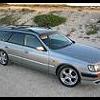Jun 2.7l Stroker Build Underway (hks T04z)
Announcements
-
Similar Content
-
Latest Posts
-
By joshuaho96 · Posted
Lots of people. Could be a lot of things like people have said. Either the heater hose/pipe, the turbo coolant return that wraps around the back of the engine, or a core plug. I have seen all three. If you want me to guess wildly though I would bet it's one of those hoses for the turbo coolant return. Or the brazing/welding for the Y- section has failed. Get a borescope down there to be 100% sure. -
By Dose Pipe Sutututu · Posted
FWIW, I've aerated oil, and cams snapped. You can figure out the rest 🥲 -
By Murray_Calavera · Posted
Depending on the hose, sometimes engine out is the easiest option
-






Recommended Posts